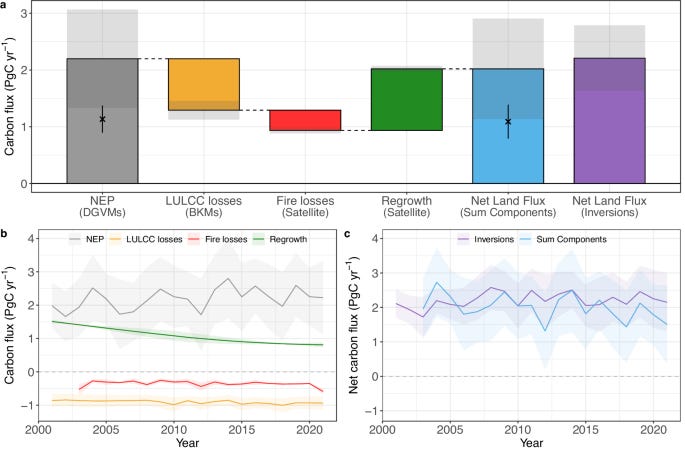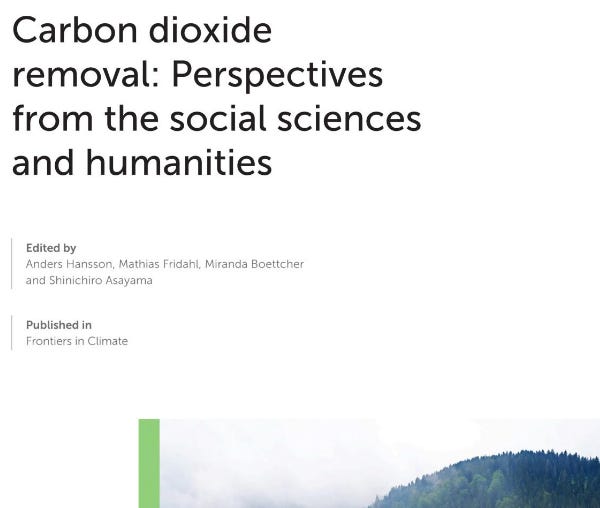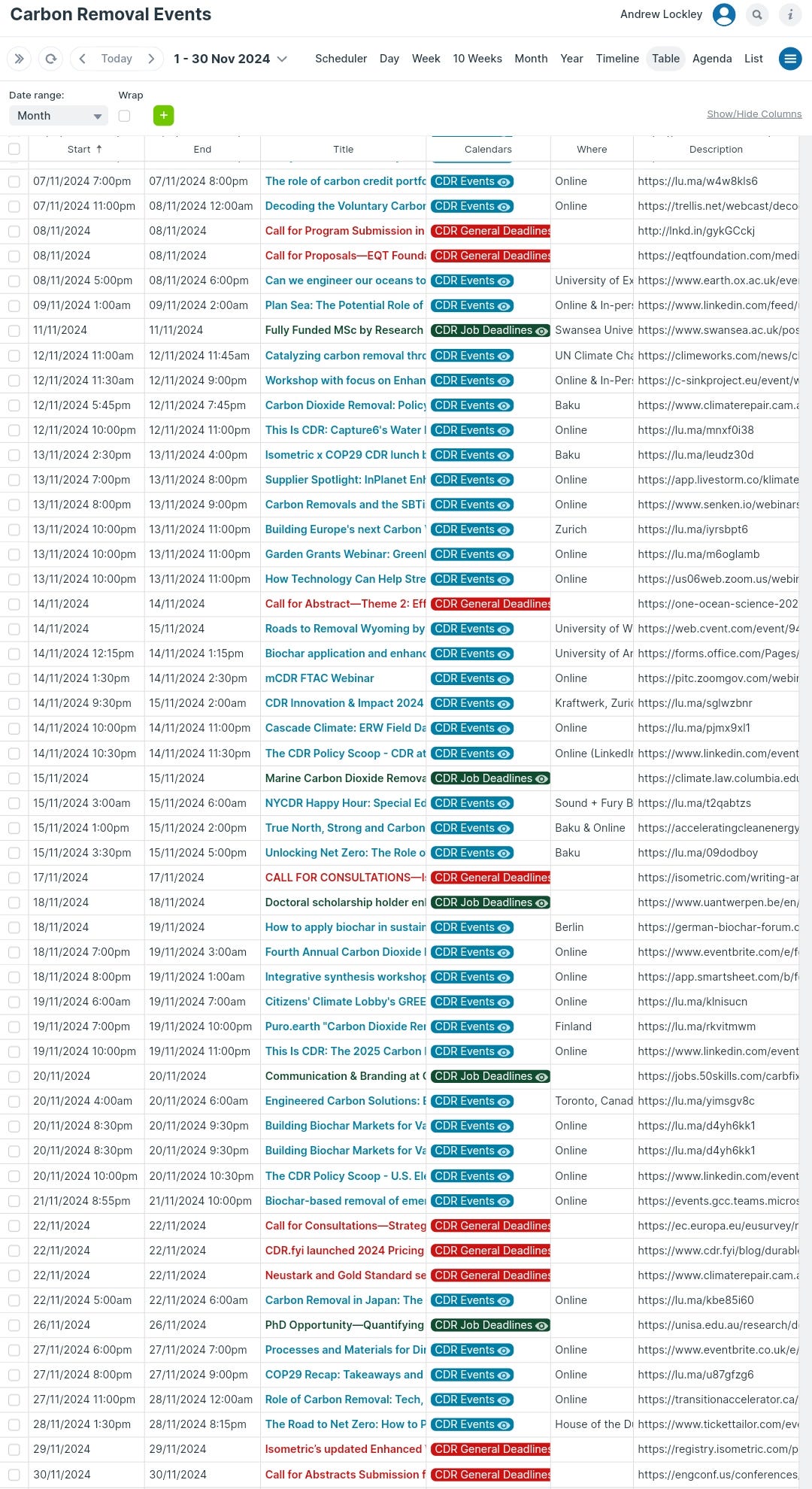CARBON REMOVAL WEEKLY SUMMARY (11 NOVEMBER - 17 NOVEMBER 2024)—WEEK#46
Links to recent scientific papers, web posts, upcoming events, job opportunities, podcasts, and event recordings, etc. on Carbon Dioxide Removal Technology.
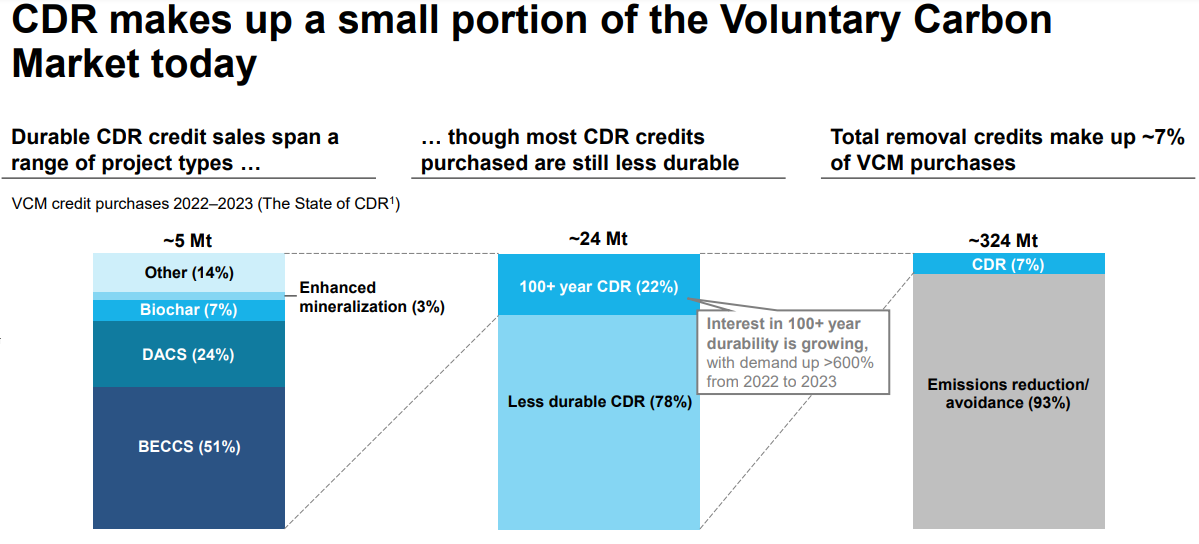
TABLE OF CONTENTS
1. Commercial News
2. Research Papers
3. Web Posts
4. Reports
5. E-Book
6. Upcoming Events
7. Job Opportunities
8. Podcasts
9. YouTube Videos
10. LinkedIn Events Recordings
11. Deadlines
Note: Click on the headings listed in the table of contents above to easily navigate to the sections you're interested in.
COMMERCIAL NEWS
GenZero and Trafigura announced US$100M expansion of the Brújula Verde nature-based carbon removals project in Colombia (Trafigura)
Klim raised $22 million to scale regenerative agriculture globally (LinkedIn)
Vaulted Deep raised $32 million in funds to inject atmospheric carbon waste down wells (Reuters)
Microsoft and RBC signed a 10-year agreement to purchase 10,000 tonnes of CDR from DeepSky (Bloomberg)
Restord announced their partnership with Cormac on their pilot biochar facility in Cornwall to sequester carbon and enhance soil quality (Cormac)
AutoTrader partnered with UNDO to remove carbon by spreading 1,839 tonnes of basalt on UK farmland, aiming to permanently remove 340 tonnes of CO2 (UNDO)
Neustark and SIG have opened French-speaking Switzerland's first CO₂ source site, capturing 1,500 tonnes of biogenic CO₂ annually for permanent storage (Neustark)
Octavia Carbon earned an 'Ae' carbon credit rating and a AAA standalone rating from BeZero, marking their first public ex-ante assessment for DACS (LinkedIn)
Rewind to launch first unique marine CDR project in 2025 (Quantum Commodity Intelligence)
ClimeFi and XPRIZE launched the Global 1000 CDR Challenge, urging 1,000 companies to buy 1,000 tonnes of durable CO₂ removal in 2025 (Climefi)
BiocharFunding launched a platform to fund biochar startups with equity, loans, and off-take deals, supporting carbon sequestration and sustainability (Biochar Today)
At COP29, countries set new standards for methodologies and removals under Article 6.4, paving the way for a global carbon market (Reuters)
Supercritical launched Community Agroforestry, a Nature-Based Solution delivering measurable carbon removals with a community focus (Supercritical)
Blusky Carbon announced a new joint venture with Ikigai Carbon Corporation, aimed at bringing biochar technology to Namibia (Blusky Carbon)
Agrecalc announced a new collaboration with Black Bull Biochar to introduce a cutting-edge biochar CDR module within its platform (Agrecalc)
NH Investment & Securities has entered into a contract with a domestic biochar production company to create 3,000 biochar CDRs a year (Quantum Commodity Intelligence)
Frontier Climate's Alkalinity Sourcing Challenge is offering $5K each for the top 10 proposals identifying fast-weathering mineral sites for CDR (Frontiers)
RESEARCH PAPERS
The key role of forest disturbance in reconciling estimates of the northern carbon sink
O’Sullivan, M., Sitch, S., Friedlingstein, P., Luijkx, I. T., Peters, W., Rosan, T. M., ... & Zaehle, S. (2024). The key role of forest disturbance in reconciling estimates of the northern carbon sink. Communications Earth & Environment, 5(1), 705.
Synopsis: Northern forests are key carbon sinks, yet discrepancies exist between dynamic global vegetation models (DGVMs) and atmospheric inversions in estimating their carbon uptake. DGVMs underestimate the sink by 50%, simulating 1.1 PgC yr−1 vs. 2.2 PgC yr−1 from inversions. In this study, researchers address this by refining disturbance processes and incorporating forest regrowth fluxes, leading to a 'bottom-up' net flux of 2.1 PgC yr−1, aligning with atmospheric inversions and boosting regional confidence in carbon sink estimates.
Durability of carbon dioxide removal is critical for Paris climate goals
Brunner, C., Hausfather, Z., & Knutti, R. (2024). Durability of carbon dioxide removal is critical for Paris climate goals. Communications Earth & Environment, 5(1), 645.
Synopsis: Carbon Dioxide Removal is essential for achieving net-zero emissions by neutralizing residual CO2. However, the definition of "durable" storage remains unclear, ranging from decades to millennia. Using a reduced-complexity climate model, researchers found that CO2 storage duration significantly affects temperature outcomes. With 100-year storage, residual emissions could cause 1.1°C of warming by 2500, risking international temperature goals. Permanent storage is crucial for credible neutralization claims.
Resilience of Phytoplankton and Microzooplankton Communities under Ocean Alkalinity Enhancement in the Oligotrophic Ocean
Xin, X., Goldenberg, S. U., Taucher, J., Stuhr, A., Arístegui, J., & Riebesell, U. (2024). Resilience of Phytoplankton and Microzooplankton Communities under Ocean Alkalinity Enhancement in the Oligotrophic Ocean. Environmental Science & Technology.
Synopsis: Ocean alkalinity enhancement (OAE) is explored as a negative emission technology, but its impact on marine ecosystems remains unclear. In a mesocosm study in the North Atlantic, researchers found that plankton communities, including phytoplankton and microzooplankton, showed high tolerance to CO2-equilibrated OAE. No significant changes were observed in abundance, biomass, or biodiversity. These findings suggest OAE's potential for minimal disruption, though further research is needed for more extreme applications.
Land conversions not climate effects are the dominant consequence of sun-driven CO2 capture, conversion, and sequestration
Adam, M., Kleinen, T., May, M. M., & Rehfeld, K. (2024). Land conversions not climate effects are the dominant consequence of sun-driven CO2 capture, conversion, and sequestration.
Synopsis: Large-scale carbon dioxide removal is crucial for mitigating climate change, but direct air capture with CO2 injection requires significant energy, infrastructure, and suitable storage sites. This study explores sun-powered, modular DAC combined with CO2 conversion into liquid or solid products (sDACCCS). While these processes can be renewably powered, they may require up to 2.82% of global land area, highlighting the need for ambitious decarbonization to avoid land use conflicts and reduce risks.
Toward net negative carbon for bricks using mechano-alkaline activated carbonated recycled concrete fines
Chen, P., Qian, X., Fang, H., Xie, J., Wang, Y., Liang, R., & Wang, J. (2024). Toward net negative carbon for bricks using mechano-alkaline activated carbonated recycled concrete fines. Construction and Building Materials, 452, 138947.
Synopsis: Recycled concrete fine (RCF) is a promising material for CO2 sequestration, but carbonated RCF (CRCF) faces challenges due to high water absorption and low reactivity. This study introduces a method for creating unfired bricks from CRCF using pressure and high-temperature steam curing. Mechano-alkaline activation (MAW) treatment significantly improves CRCF's properties, increasing compressive strength by 55.8% and making the bricks carbon-negative with a net CO2 balance of −48.83 kg per ton.
Sector-specific and carbon removal targets could limit adverse impacts of climate change and promote sustainability
Liu, H., Ampah, J., Jin, C., Yao, M., Yin, Y., Afrane, S., ... & McJeon, H. (2024). Sector-specific and carbon removal targets could limit adverse impacts of climate change and promote sustainability.
Synopsis: The study introduces a modeling approach combining explicit decarbonization targets for electricity and transport with separate CDR goals, based on current national plans. A "fair share" scenario aligns timelines and CDR burdens with countries' capabilities. Developed nations transition faster, while lower-income nations face fewer obligations. This sector-specific strategy cuts residual emissions by 35% and CDR needs by 35–45%, enhancing sustainability by preserving food security and reducing water, land, and fertilizer demand.
Gigaton gear – policy insights for scaling up the global deployment of direct air carbon capture and sequestration technology (DACCS)
Wesche, J. P., & Skjølsvold, T. M. (2024). Gigaton gear–policy insights for scaling up the global deployment of direct air carbon capture and sequestration technology (DACCS). Climate Policy, 1-15.
Synopsis: Direct Air Carbon Capture and Sequestration (DACCS) has significant potential for climate change mitigation, but its global capacity remains minimal, highlighting the need for faster deployment. This paper analyzes the DACCS innovation system using the Technological Innovation Systems (TIS) framework, identifying policy challenges and suggesting key leverage points. Through interviews with key actors, it provides insights on policy improvements, market formation, and research investment to scale DACCS technologies globally.
Anticorrelation of net uptake of atmospheric CO2 by the world ocean and terrestrial biosphere in current carbon cycle models
Schwartz, S. E. (2024). Anticorrelation of net uptake of atmospheric CO2 by the world ocean and terrestrial biosphere in current carbon cycle models. Biogeosciences, 21(22), 5045-5057.
Synopsis: This study found a strong inter-model anticorrelation in the rates and extents of atmospheric CO2 uptake by the world ocean (WO) and terrestrial biosphere (TB) following emissions reduction or cessation. Models with higher WO uptake rates showed lower TB uptake rates, and vice versa, beyond what competition for excess CO2 would predict. This reduced inter-model variability could create a misleadingly high confidence in projections of CO2 reduction impacts and the relative global warming potentials of non-CO2 greenhouse gases.
Countries need to provide clarity on the role of carbon dioxide removal in their climate pledges
Lamb, W. F., Schleussner, C. F., Grassi, G., Smith, S. M., Gidden, M. J., Geden, O., ... & Minx, J. C. (2024). Countries need to provide clarity on the role of carbon dioxide removal in their climate pledges. Environmental Research Letters.
Synopsis: Carbon dioxide removal (CDR) involves capturing CO2 from the atmosphere and storing it for decades to millennia. Alongside deep emissions reductions, CDR is required for meeting the temperature goal of the Paris Agreement (IPCC 2022). However, parties to the agreement do not currently distinguish CDR from emissions reductions in their climate pledges. In this perspective, researchers argue that this lowers transparency and hinders the assessment of how credible and ambitious mitigation plans are.
Carbon Technologies: Direct Air Capture and Why Opinions Matter
Harrington, J. Z. (2024). Carbon Technologies: Direct Air Capture and Why Opinions Matter. In Climate Change through the Lens of a New Generation (pp. 171-179). American Chemical Society.
Synopsis: Does the best technology always win? Through systematic underrepresentation of regional perspectives and the opinions of those who will be interfacing with the technology and policy-based solutions to climate change, scientists and policymakers are putting the future in jeopardy. Rather than discount nonexperts, integrating their perspectives into how we develop technology can enable us to better address the very problems we are trying to solve. This chapter focuses on an analysis often forgotten in scientific discussions, considering the perspectives of those outside science: specifically, investigating how failure to consider these perspectives can lead to challenges in the adoption of direct air capture.
Ecosystem Service Delivery by Urban Agriculture as a Nature-Based Solution (NBS): Carbon Sequestration
Gharibi, S., Shayesteh, K., & Rastkhadiv, A. (2024). Ecosystem Service Delivery by Urban Agriculture as a Nature-Based Solution (NBS): Carbon Sequestration.
Synopsis: Nature-Based Solutions (NBS), like Urban Green Infrastructures (UGIs), can mitigate climate change impacts. Urban agriculture, a key UGI, provides carbon storage and sequestration alongside other ecosystem services. This study in Hamadan assessed the carbon sequestration potential of urban agriculture, finding that potato cultivation had the highest soil carbon sequestration (181 t/ha), while flax grass cover showed the greatest potential for grass carbon sequestration (14.33 t/ha), highlighting urban agriculture’s potential for carbon capture.
Enhanced sulfide burial in low-oxygen aquatic environments could offset the carbon footprint of aquaculture production
Fakhraee, M., & Planavsky, N. J. (2024). Enhanced sulfide burial in low-oxygen aquatic environments could offset the carbon footprint of aquaculture production. Nature Food, 1-7.
Synopsis: Carbon removal is essential to limit global temperature rise to below 2°C. Researchers in this study explore how enhanced iron sulfide formation in low-oxygen environments, like aquaculture systems, could offer a cost-effective method for CO2 removal. Findings revealed that by supplying reactive iron to surface sediments, sulfide burial could capture up to 100 million tonnes of CO2 annually, especially in countries like China and Indonesia. This method not only reduces carbon footprints but also benefits ecosystems and supports carbon-neutral aquaculture.
Annual grass invasions and wildfire deplete ecosystem carbon storage by >50% to resistant base levels
Maxwell, T. M., Quicke, H. E., Price, S. J., & Germino, M. J. (2024). Annual grass invasions and wildfire deplete ecosystem carbon storage by> 50% to resistant base levels. Communications Earth & Environment, 5(1), 669.
Synopsis: Ecological disturbances, such as species invasions and altered fire regimes, significantly impact soil carbon storage. In the sagebrush steppe of North America, invasive species and wildfires depleted soil carbon by 42-49%, especially in deep horizons. This could result in a loss of 17.1-20.0 Tg carbon annually across 400,000 ha. Despite this, disturbance effects seem to reach a resistant base-level, highlighting the potential for restoring dryland shrublands to stabilize soil carbon.
Ecological restoration enhances dryland carbon stock by reducing surface soil carbon loss due to wind erosion
Song, J., Wan, S., Zhang, K., Hong, S., Xia, J., Piao, S., ... & Qiu, X. (2024). Ecological restoration enhances dryland carbon stock by reducing surface soil carbon loss due to wind erosion. Proceedings of the National Academy of Sciences, 121(46), e2416281121.
Synopsis: Ecological restoration is widely hypothesized to enhance ecosystem carbon stocks by stimulating plant photosynthetic carbon fixation. However, the role of vegetation in mitigating dryland soil carbon loss from wind erosion is often overlooked. This study distinguishes the contributions of increased plant carbon input and reduced wind erosion carbon loss to ecosystem carbon stocks under ecological restoration through a comprehensive regional survey covering an area of 3.14 million km2 and a 13-y manipulative experiment in China’s drylands. Contrary to widely accepted consensus, enhanced plant growth contributes little to increased carbon stocks under ecological restoration, which is predominantly caused by reduced surface soil carbon loss due to suppressed wind erosion. This finding reveals a unique but often-overlooked mechanism enhancing dryland carbon stocks.
The Global Carbon Budget 2024
Friedlingstein, P., O'Sullivan, M., Jones, M. W., Andrew, R. M., Hauck, J., Landschützer, P., ... & Zeng, J. (2024). Global Carbon Budget 2024. Earth System Science Data Discussions, 2024, 1-133.
Synopsis: Accurate assessment of CO2 emissions and their distribution across the atmosphere, ocean, and terrestrial biosphere is critical for understanding the global carbon cycle and supporting climate policy. The 2023 global carbon budget reveals total anthropogenic CO2 emissions of 11.1 GtC yr-1. Fossil emissions increased by 1.3% in 2023, with a near-zero carbon budget imbalance. Preliminary data for 2024 suggest a slight rise in emissions, with atmospheric CO2 concentrations reaching 422.5 ppm, 52% above pre-industrial levels.
Let it sink in: New governance and finance structures are needed to scale up carbon dioxide removals
Edenhofer, O., Kilimann, C., Leisinger, C., Fuss, S., Kalkuhl, M., Pahle, M., Köhler-Geib, F., Börner, M., Kohn, K., Levinger, H., & Römer, D. (2024). Let it sink in: New governance and finance structures are needed to scale up carbon dioxide removals. Zenodo.
Synopsis: In light of the COP29 thematic backdrop, this article outlines five priority fields of action: (1) Adapt carbon markets to support net-negative emissions, (2) Expand market coverage to include more countries, (3) Support innovation and investment in CDR technologies, (4) Establish a CDR buyers' club to ensure demand, and (5) Operationalise Article 6 of the Paris Agreement to enable the international transfer of carbon credits, while ensuring robust environmental and social safeguards.
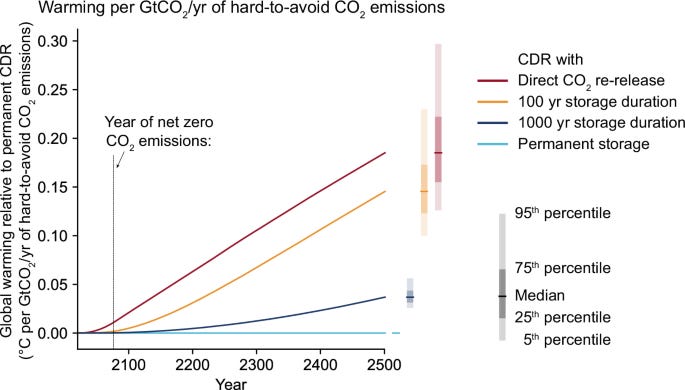
WEB POSTS
Puro.earth at COP29: Interests and Calls to Action for Durable CDR (Puro.earth)
The hidden risk in net zero targets: why storage durability matters (Illuminem)
Using regenerative agriculture to heal the land and help communities: Q&A with Kaleka founder Silvia Irawan (Mongabay)
1000-Year Durability Of Carbon Removals Needed To Meet Climate Goals (Forbes)
The power of direct air capture and IoT in solving supply challenges (Bits & Chips)
Geology students conduct research as part of carbon sequestration work (Western Michigan University)
Oregon geologist looks to volcanic rock to store carbon dioxide as tool to fight climate change (Oregon Capital Chronicle)
An analysis of Stockholm Exergi’s proposed flagship BECCS installation (Fern)
Only 18 countries need to exceed their climate targets to meet 1.5°C (Marginal Carbon)
Scientific models trust the land to soak up lots of CO₂ – the reality is a lot more messy (The Conversation)
Scientific models trust the land to soak up lots of CO₂ – the reality is a lot more messy (BNN Bloomberg)
Increased CO2 uptake by the ocean (Bjerknes Centre)
Rethinking aviation's path to Net Zero: the carbon removals approach (Sustainability in the Air)
Low-Carbon Concrete - Code Requirements and Commentary (American Concrete Institute)
GLJ, Energy Fuse to lead carbon sequestration and EOR projects in US (Offshore Technology)
Crediting challenges when carbon removal comes with avoided emissions carbon(plan)
COP29: PIK and KfW launch financing concept for carbon removals at world climate summit (PIK)
Make Mitigation, Adaptation or Removals Your Job and Purpose! (Carbon Drawdown Initiative)
Scientists Are Crafting Fake Whale Poop and Dumping It in the Ocean (Smithsonian Magazine)
White House unveils ocean carbon removal plan ahead of Trump tsunami (E&E News)
Paris Agreement Crediting Mechanism (UNFCC)
CDR Policy Roads Less Traveled (Climagination)
Government a critical partner to scaling up carbon removal: think tank (Sustainable Biz)
Is putting a price on carbon the most effective instruments to unlock capital for climate investments AND reduce and remove carbon? (LinkedIn—Anna Lerner Nesbitt)
Engineering a Game Changer in Carbon Removal: Why We Invested in Octavia Carbon (Medium)
REPORTS
Implications for UK Net Zero of Bioenergy with Carbon Capture and Storage (BECCS) Utilising Southern US Sourced Biomass (Spatial Informatics Group)
National Marine Carbon Dioxide Removal Research Strategy (WH Gov)
Unlocking the potential of NBS: The role of community agroforestry (Supercritical)
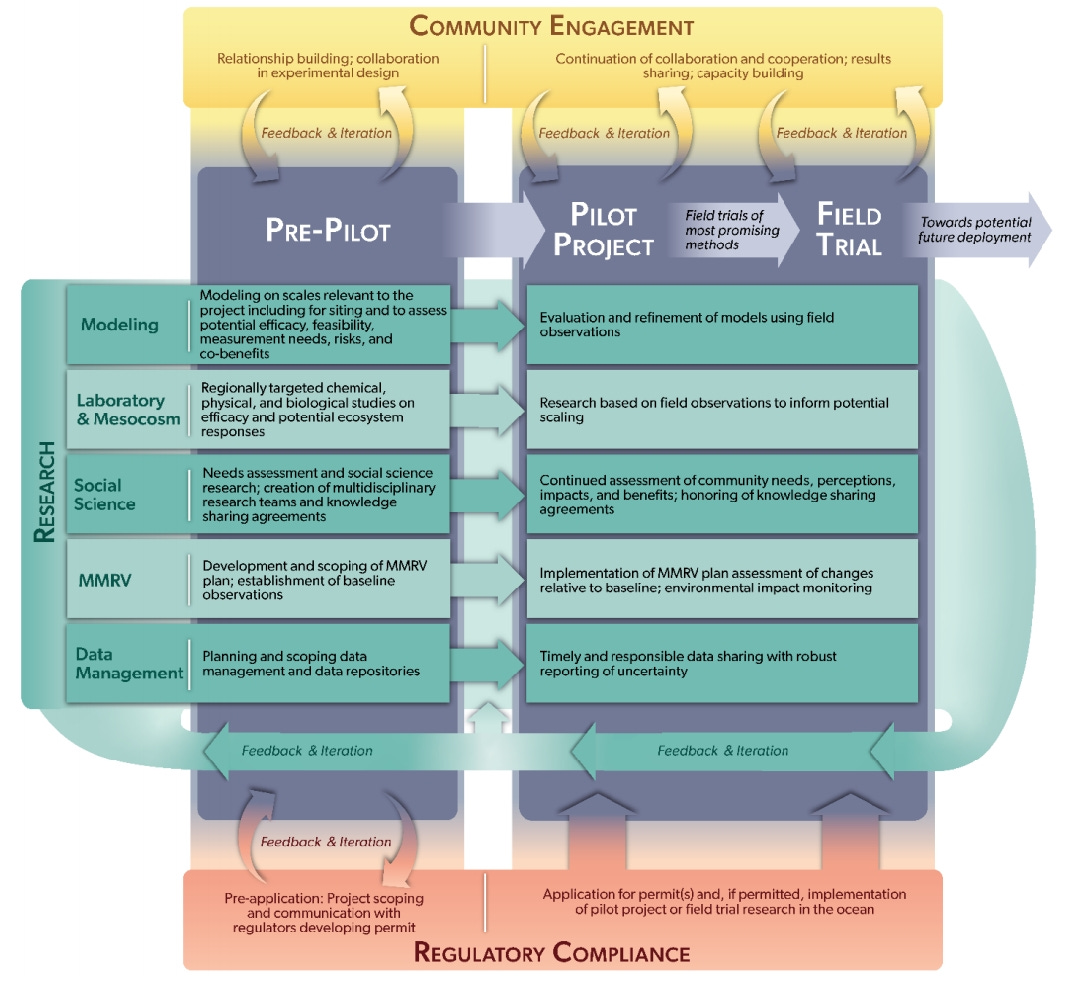

EBOOK
Carbon dioxide removal: Perspectives from the social sciences and humanities (Frontiers)
UPCOMING EVENTS
Various CDR-related events happening at COP29 from 11-22 November 2024 | Baku & Online
(NEW) Citizens' Climate Lobby's GREENHOUSE GAS REMOVAL ACTION TEAM by Pete Greider's Calendar | 18 November 2024 | Online
(NEW) Engineered Carbon Solutions: Exploring Innovation | 19 November 2024 | Toronto, Canada
Puro.earth "Carbon Dioxide Removal: Commercialisation Landscape" Panel at Slush 2024 | 19 November 2024 | Finland
(NEW) This Is CDR: The 2025 Carbon Removal Challenge! by The OpenAir Collective | 19 November 2024 | Online
(NEW) The CDR Policy Scoop - U.S. Election by Sebastian Manhart | 20 November 2024 | Online
Building Biochar Markets for Value & Scale by Grain Ecosystem | 20 November 2024 | Online
Biochar-based removal of emerging contaminants from recycled water used for agricultural irrigation | 21 November 2024 | Online
Carbon Removal in Japan: The GX League and Beyond by AirMiners | 22 November 2024 | Online
(NEW) Processes and Materials for Direct Air Capture of Carbon Dioxide by University of Cambridge Decarbonisation Network | 27 November 2024 | Online
(NEW) The Role of Carbon Removal: Tech, Policy, and Business Insights by Carbon Removal Canada | 27 November 2024 | Online
(NEW) COP29 Recap: Takeaways and Next Steps by AirMiners | 27 November 2024 | Online
The Road to Net Zero: How to Pave the Way for Carbon Farming, Removal, and Capture by Landmark | 28 November 2024 | House of the Dutch Provinces
Carbon Removal Takeaways from COP29 by Carbon Business Council | 03 December 2024 | Online
(NEW) Carbon Dioxide Removal and the Journey to Net Zero: A Call to Action for Business' by WBCSD | 03 December 2024 | Online
Industrial Energy Green Transition 2024 | 3-5 December 2024 | Tokyo
Carbon Removal Tech & CDR Markets | 05 December 2024 | Tokyo, Japan
Scoping Workshop: Leaky deltas: sources or sinks in the global carbon cycle? by OCB | 17-20 March 2025 | Baton Rouge, LA
Ocean Visions Biennial Summit 2025 | 25-27 March 2025 | British Columbia
Bio-Char IV Conference | May 18-23, 2025 | Santa Marta, Colombia
ERW25: Terrestrial and marine carbon dioxide removal by enhanced rock weathering by University of Antwerp | 3-5 June 2025 | Belgium
Carbon Clean-up Camp | 25 June 2025
We have curated a “Carbon Removal Events Calendar.” Explore and stay informed about upcoming events, conferences, and webinars on Carbon Dioxide Removal technology. Sync specific events / all events to your default calendar to ensure you never miss out on important CDR updates.
GUIDELINES:
Sync selected events to your default calendar in these simple steps:
1) Click on the event you want to sync.
2) Tap the menu icon (three vertical lines) at the top left.
3) Choose 'Share.'
4) Pick your default calendar.
5) Save the event.
Sync the entire Teamup Calendar to your default calendar with these simple steps:
1) Tap the menu icon (three vertical lines) at the top right.
2) Choose 'Preferences.'
3) Click 'iCalendar Feeds.'
4) Copy the URL shown for 'CDR Events / CDR General Guidelines / CDR Job Deadlines.'’
5) Paste the URL into your default calendar settings.
6) Click 'Subscribe' or 'Add Calendar.'
For more detailed instructions, visit: https://calendar.teamup.com/kb/subscribe-to-teamup-icalendar-feeds/
You can directly sync all Carbon Removal events to your default calendars by pressing the link below:
JOB OPPORTUNITIES
Post Doctoral RA – Coastal Biogeochemistry at Pacific Northwest National Laboratory (PNNL) | Sequim, Washington | Deadline to apply: 14 December 2024
"The Fundamental & Biogeochemistry Team at Pacific Northwest National Laboratory (PNNL) is soliciting applications for a Postdoctoral Research Associate position studying different marine carbon dioxide removal (mCDR) technologies. The successful applicant will conduct laboratory and field-based research to advance quantitative understanding of how mCDR interventions interact with coastal biogeochemical cycles to promote enhanced uptake of atmospheric CO2 by the ocean."
Communication & Branding at Carbfix | Deadline: November 20, 2024
"At Carbfix, we provide a natural and permanent storage solution by turning CO2 into stone underground in less than two years. Our mission is to significantly contribute to climate recovery through worldwide scaling and further development of safe, underground CO2 mineral storage."
Various Job Opportunities at University of Chicago—Climate System Engineering Initiative
"The University is building a world-leading Climate Systems Engineering initiative with multiple faculty hires addressing solar geoengineering, open-system carbon removal such as enhanced weathering, and interventions to limit loss of glacial ice. We seek individuals who will lead research programs that will produce significant contributions to their field and to this research initiative."
Carbon Program Manager at Funga | Remote within Continental US
"Funga is a public benefit corporation harnessing forest fungal networks to address the climate crisis. We combine modern DNA sequencing and machine learning technology with breakthrough research on the forest microbiome to put the right native, biodiverse communities of mycorrhizal fungi in the right place. This leads to more quality wood created more quickly, more carbon sequestered, and more resilient forests."
Business Development Representative, APAC at BeZero | Singapore
"BeZero Carbon is the largest global ratings agency for the Voluntary Carbon Market. We distribute our ratings via our SaaS Product, BeZero Carbon Markets, informing all market participants on how to price and manage risk. Our ratings and research tools provide buyers, intermediaries, investors, and carbon project developers with mission-critical data."
Process Engineer at Spiritus | Santa Fe, New Mexico, United States
"Spiritus is a climate tech company at the forefront of Direct-Air-Capture (DAC) technology. With a dedication to innovation and sustainable stewardship of our environment, Spiritus has crafted a unique solution that achieves rapid sorption and desorption rates at a fraction of the sorbent cost versus state-of-the-art sorbents under passive DAC conditions. The company’s approach combines the Spiritus Sorbent and the Spiritus Carbon Orchard, offering a scalable and modular system for low-cost DAC and sequestration (DAC+S). Spiritus is committed to making carbon removal an accessible and practical tool in the global fight against climate change."
Frontier Diligence Lead at Stripe | New York, South San Francisco HQ, Seattle, or Chicago
"As a Diligence Lead for Frontier, you’ll be responsible for helping us figure how to deploy our funds to be maximally catalytic for the field. Your job is to find and make recommendations on which carbon removal companies to buy from, including seeking out and soliciting input from cross-disciplinary (and often niche) expertise, ranging from science and engineering, to operations and finance. This role requires someone with an understanding of a broad set of disciplines, fearlessness and humility to dive into new topics, and exceptional judgment to drive towards the ‘right’ recommendations."
WHS Officer at Loam | Orange, New South Wales, Australia
"At Loam, we have the earth in our hands. As a team of scientists, farmers, and entrepreneurs, we are on a mission to revolutionise agriculture and address climate change. Through our cutting-edge microbial technology, we are enhancing soil health, boosting crop yields, and sequestering carbon to create a sustainable future for farming. We are committed to empowering farmers and promoting regenerative practices that benefit both the environment and their bottom line."
Data Scientist at Paebbl | Remote
"Paebbl is a decarbonization technology company on a mission to restore the Earth's carbon balance. We are commercializing a proven technology to turn captured CO2 into valuable industrial raw materials. Our team is pan-European, with hubs in The Netherlands, Sweden, and Finland."
Senior Technical Program Manager, Thermal Systems at Heirloom | Brisbane, CA
"At Heirloom, we are turning that into reality. We use the natural carbon capture properties of abundant minerals to pull CO2 from the air, and store it permanently underground. We come to work every day to slow climate change, and are united behind a single, common goal - to remove 1 billion tons of CO2 from the sky by 2035, and to not stop before we get there."
Operations Manager at Isometric | London
"Isometric is the world’s most trusted carbon registry. We issue scientifically rigorous carbon credits to help Fortune 100 companies avoid greenwashing while tackling climate change."
Payment for Ecosystem Services at Cornell Cooperative Extension | Educator - Ithaca, NY
"Payment for Ecosystem Services is a pilot program that would incentivize and reward farmers who provide services for our community such as carbon sequestration and erosion/nutrient runoff mitigation."
PhD Opportunity— The impacts of gigaton-scale direct air capture of carbon dioxide on natural resources at Newcastle University
"Direct air capture (DAC) removes CO2 from the atmosphere using chemical sorbents in an engineered process. When coupled with geological CO2 storage (DACCS), a negative CO2 emissions technology is realised. DAC has been described as a “chemical separation to change the world”,[1] and its deployment at gigaton scale is a critical requirement in most internationally-agreed climate policy scenarios.
The demands that gigaton-scale DAC will place on natural resources (e.g., land, water, and materials for construction and use as chemical sorbents) are poorly understood, as are the life cycle, environmental, and sustainability impacts. Moreover, different DAC technologies pose radically different demands on natural resources. For example, to capture 1% of annual global CO2 emissions, one incumbent technology will require ~20% of the global silica and ethanolamine markets,[3] and ~25% of global energy supplies by 2100.[4] This has prompted others to explore the use of natural minerals as sorbents instead, and powering DAC via photovoltaic energy combined with battery storage (which also requires minerals). Here, the environmental burden shifts dramatically to mineral resources depletion; such a process at gigaton scale would account for ~1% of all global annual environmental impacts.[5] In almost all DAC approaches, water is consumed in the synthesis and regeneration of chemical sorbents, and as an unintentionally co-captured species from air. Between 1 and 50 tons of water are consumed per ton of CO2 captured.[6] Thus, gigaton-scale DAC will also place very significant demands on water; developing ‘water management strategies’ is at the forefront of research in this area internationally.[6]
With a plethora of DAC technologies being proposed (>150 start-ups tracked by the US DoE), similar, yet distinct demands are expected to emerge for each technology. Thus far, life-cycle assessment (LCA) has focussed on individual DAC technologies, with very few comparative analyses. Moreover, as the technology matures and becomes more widespread there is a real need to quantify the demand on natural resources and particularly how these could compete with other climate interventions."
Enterprise Account Executive at Patch | London
"Patch combines technology and carbon markets expertise to help companies build and execute their carbon credit strategies. Our platform supports buyers with defining or refining their approach to the voluntary carbon market, and executing on their goals with high-integrity projects. We have helped hundreds of companies meet their sustainability goals while accelerating climate solutions."
Department Lead Product at ecoLocked | Berlin, Remote, Bernau
"ecoLocked is a climate tech startup that focuses on carbon removal and innovations in the materials sector. We develop sustainable building materials based on biochar, a scalable carbon-negative material. Our goal is to enable the transition to a green construction sector and turn buildings into true carbon sinks – and ultimately enable a positive climate impact in the range of gigatons!"
ADC/DAC Designer for Quantum Computing at NordAmps | Lund, Skåne County, Sweden
"NordAmps is a Lund based nanotechnology startup delivering the next generation of transistors. Our nanowire technology represents the convergence of 20 years of research with leading-edge application needs. Designed for high-frequency wireless communication, our nanowire transistors are fabricated by combining well-established technologies and materials with a minimalistic design in a completely new and innovative way."
Commercial Program Manager at Deepsink | London, England, United States
"Deepsink is a pioneering commercial agency dedicated to accelerating the commercial development of Carbon Dioxide Removal (CDR) companies. Our mission is to drive growth for the most promising climate tech and infrastructure, using business as a force for good in tackling climate change."
Climate Strategy Associate at Carbon Direct | United Kingdot
"At Carbon Direct, we dedicate our scientific, software, and business expertise to empower organizations around the world to take climate action."
Strategy - Carbon Capture & Enhanced Rock Weathering at Varaha | Gurugram, Haryana, India
"Varaha is a leading climate tech venture focused on carbon removal solutions such as - regenerative agriculture, afforestation, biochar, and enhanced rock weathering - that support smallholder land stewards at scale."
Maintenance Engineer - Mechanical at Climeworks | Reykjavik, Iceland
"Climeworks removes CO₂ from the air to fight global warming and protect future generations to come."
Production Worker at Everest Carbon | Linz, Austria
"Everest Carbon is a fast-growing climate technology startup specializing in innovative sensor technology for the commercialization of negative emissions. Our mission is to enable 1 billion tons of CO2 removed per year by 2035 through our products and services."
Technical Business Development Manager at Avnos | Los Angeles, CA
"Avnos believes solving the water/energy resource equation is the most direct path to scaling direct air capture of carbon dioxide economically, responsibly, and sustainably. This is why we integrate water at the heart of our technology. This enables broad deployment, as our system produces water as it captures CO2. As a result, our approach minimizes energy consumption, enhancing cost effectiveness and climate impact."
Head of Research And Development at RepAir Carbon Capture | Yokneam Ilit, Northern District, Israel
"RepAir is a pioneering startup specializing in electrochemical CO₂ capture technology and is currently advancing into the scale-up phase."
Senior Carbon Manager at Reforest'Action | Rueil-Malmaison, Île-de-France
"Reforest'Action's mission is to regenerate terrestrial ecosystems on a large scale to tackle global challenges using field experience, local communities, science and technology."
Looking for your dream job in CDR? There are 710 jobs available *right now*: check them all out at:
PODCASTS
Gentoo.earth - Kirby | Reviewer 2 Does Geoengineering
"Juliet Kirby explains how gentoo.earth uses AI to match carbon removal buyers and sellers. Despite @geoengineering1 trying his best to wind her up for lulz, she doesn't break character. NB this isn't paid promotion; gentoo hasn't sponsored this episode. No penguins (gentoo or otherwise) were harmed in the making of this episode."
Planetary Technologies’ Mike Kelland and Dr. Will Burt updates on company's growth | Plan Sea Podcast
"In this edition of Plan Sea, hosts Anna Madlener and Wil Burns are joined by returning guest Mike Kelland, CEO and co-founder of Planetary Technologies (“Planetary”), as well as Dr. Will Burt, Planetary’s Chief Ocean Scientist. Planetary is an ocean alkalinity enhancement (OAE) startup based in Halifax, Canada.
Kelland and Burt update the Plan Sea hosts on Planetary’s growth over the last year, which includes securing $11.5 million in Series A funding — a figure which is particularly notable within the relatively young marine carbon dioxide removal (mCDR) field. They break Planetary’s strategic pivot from electrochemistry mCDR approaches to its newly patented process focused on alkaline byproducts.
The Planetary team also emphasizes the importance of partnership-building as an accelerant for effective, safe, and scalable OAE deployment. Cross-sector collaboration has been key to the success of Planetary’s OAE field trial, which delivered net carbon removals in conjunction with Nova Scotia Power and researchers at Dalhousie University. Other partnerships include the Canadian Department of Fisheries and Oceans, the Halifax Regional Council, Environment Canada, and local Halifax fisheries."
Kenya’s CDR Profile Up-Close - James Mwangi | Unbound
The Kenyan Carbon Removal Advantage: Capitalising on Geothermal Energy and a Thriving Start up Culture - Diana Maranga | Unbound
Scaling a New Gigaton Industry: Taking Cues from the CDRjobs 2024 Survey - Helen Lundebye | Unbound
YOUTUBE VIDEOS
Opportunities for Africa in CDR. Why Africa should care about CDR with Bilha Ndirangu | CDRPlus Podcast
"Africa has immense potential in CDR, in both harnessing natural resources and innovative solutions to address climate change and positioning Africa with the compliance markets. The continent's unique landscape and rich biodiversity provide endless possibilities for impactful CDR projects.
In this video, we explore how CDR can benefit Africa's economies, help in creating the right policies and drive for skills development and green curriculum."
"Companies and governments must partake in carbon removal," Megan Kemp, South Pole | Carbon Herald
"Our guest in this episode is Megan Kemp, Head of Carbon Dioxide Removal (CDR) at South Pole. Megan walks us through the complexities of forming CDR portfolios and talks about the joint venture with Mitsubishi Corporation called NextGen CDR, which manages one of the largest diversified portfolios of permanent carbon removals."
Shaun Fitzgerald speaks: Policy Considerations for Carbon Dioxide Removal | Centre for Climate Repair
"Watch the Centre's Director, Dr Shaun Fitzgerald speak at the Day 2 Side Event on Carbon Dioxide Removal: Policy Considerations for Responsible Deployment on Land and in the Ocean."
Introduction to Victor Smetacek | Ocean Iron Fertilization | Liquid Trees
"Victor Smetacek, an Indo-German oceanographer, pioneered research on diatoms and their role in the global carbon cycle. He discovered that diatom blooms could rapidly sink, significantly affecting carbon sequestration. His interdisciplinary work reshaped understanding of ocean ecosystems and highlighted biology's influence on Earth's environmental systems."
Basics of OIF | Ocean Iron Fertilization | Liquid Trees
"Phytoplankton production in nutrient-rich areas of the open ocean (HNLC regions) is limited by iron availability, despite abundant nutrients. John Martin's iron hypothesis proposed that adding iron could trigger plankton blooms, enhancing productivity. Initial experiments confirmed this, showing that iron fertilization drives growth, impacting carbon cycles and ocean ecosystems."
How to scale up (to make carbon sequestration impactful)? | Columbia GSAPP
This Is CDR: Capture6 - Water Positive Direct Air Capture with Dr. Luke Shors | OpenAir
"This Is CDR welcomes Dr. Luke Shors, President of Capture6, a pioneering Direct Air Capture company headquartered in California and New Zealand. Capture6 is at the forefront of DAC innovation, offering a unique, water-positive direct air capture (DAC) technology that not only removes CO₂ from the atmosphere but also enhances freshwater availability. By integrating their systems with existing water treatment facilities, Capture6 transforms waste brine into valuable resources, addressing both carbon removal and water scarcity challenges."
It's Still "Go Time" | Tito - AirMiners
Epiphyte Weekly Meetup: Opensource Direct Air Capture | OpenAir
"A weekly planning and ideation meetup for OpenAir's Epiphyte team, where members from all over the world contribute to the latest version of a deskscale opensource direct air capture device."
Speaking in Tonnes: Conversations on Carbon Removal with Breakthrough Energy | 1PointFive
"As someone who regularly engages with a wide range of audiences, from the general public to corporate leaders and those on Capitol Hill, Jack Andreasen with Breakthrough Energy explains how he breaks down the complexity of carbon dioxide removals to better communicate both their immediate and long-term value."
Blockheads: Decarbonizing Concrete through Building Code Reform | OpenAir
"The International Building Code (IBC) is the comprehensive set of construction and design standards that serves as the foundation for most local and state building codes in the United States. Several sections of the IBC pertain to concrete, its material composition and use. The American Concrete Institute (ACI) is the lead promulgator of new concrete codes and code revisions in the IBC.
In November 2024, ACI published ACI Code 323-24: Low Carbon Concrete - Code Requirements and Commentary. This 29-page document provides minimum requirements to reduce greenhouse gas emissions from manufacturing concrete mixtures for jurisdictions where such reductions are required or recommended.
The release of Code 323-24 represents a potential watershed moment for concrete decarbonization policies and programs, given the weight and influence of ACI code revisions. In this workshop, we welcome Matthew P. Adams, PhD, who led the collaborative process to promulgate Code 323-24. Dr. Adams will provide an overview of the code’s core components and offer perspective on the potential impact. Our discussion will include an exploration of the role of advocacy to accelerate its adoption in 2025 and beyond."
Weekly Carbon Removal Updates from 11 November - 17 November 2024 | Carbon Removal Updates Bulletin
LINKEDIN EVENTS RECORDINGS
The CDR Policy Scoop - CDR at COP29 | Sebastian Manhart
"Day 1 of COP29 achieved what two previous COPs couldn’t deliver: a breakthrough on Article 6.4. But what does this really mean for CDR? If you are struggling to conceptualise this development, look no further. We (Sebastian Manhart & Eve Tamme) will be diving into exactly what happened, what this means for the future of CDR, and what is coming up next for CDR under the Paris Agreement."







